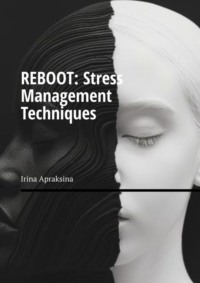
Полная версия
Death hunt of Samuel Little. America’s bloodiest serial maniac

Death hunt of Samuel Little. America’s bloodiest serial maniac
Irina Apraksina
© Irina Apraksina, 2024
ISBN 978-5-0062-7042-8
Created with Ridero smart publishing system
1.
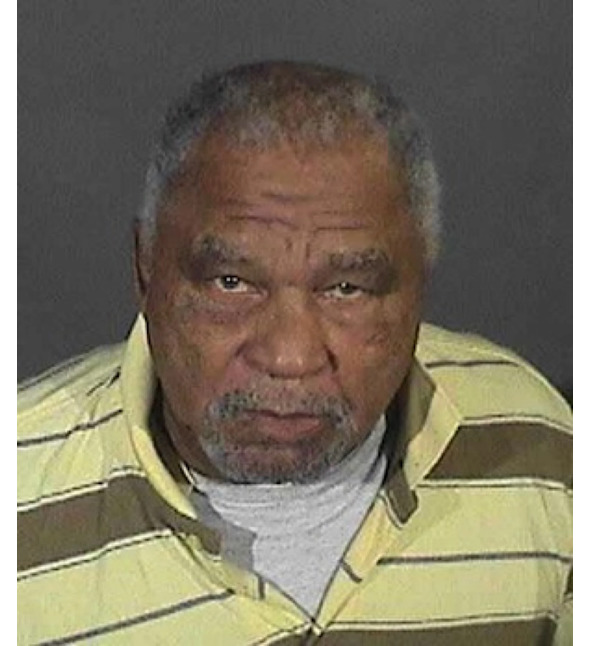
WIKIPENDIA PHOTO
“This man is an absolute genius.”
– These are the words of James Holland Ranger of Texas about the most massive serial killer in U.S. history
Chapter 1 The Virginity and Youth of Future Serial Killer Samuel Little
Samuel Little is the most massive serial killer in U.S. history
Samuel Little was born as Samuel McDowell on June 7, 1940, in Reynolds, Georgia. Little claimed that his mother, Bessie Mae Little, was a teenage prostitute who abandoned him; authorities believe she may have given birth to him while in prison. The census for the year of Little’s birth shows that Bessie Mae worked as a maid and his father was 19-year-old Paul McDowell.
Information about Samuel Little’s (Samuel McDowell) parents is limited, but it is known that his mother was unmarried and left him as a child. Samuel lived with relatives in Ohio and, in his own words, was abused as a child.
In Ohio, he attended Hawthorne Junior High School, where he had discipline and academic problems.
Already during this period he began committing petty crimes, such as theft and robbery, and was arrested several times.
In his own words, he had sexual fantasies about strangling women as a child when he saw his teacher touching her neck; as a teenager, he collected true-crime magazines depicting strangled women
An unstable childhood and mental illness may also have contributed to Little’s later aggressive behavior. For example, Little was forced to move from school to school and did not have a stable environment. This may have caused him to feel helpless and alienated, which he may have tried to compensate for through controlling others.
According to Samuel Little, he suffered a lot of violence from his brothers as a child, which may have affected his psychological state.
According to the information, Samuel Little, did not maintain a close relationship with his family, both as a child and as an adult. He repeatedly noted that he hated his father, who abused him as a child, and had no contact with him after he got out of prison.
Little had already committed various crimes at a young age, including theft and attacks on peers. When he was just 12 years old, he was arrested for stealing a bicycle. In the years that followed, he continued to commit crimes and was eventually sent to a juvenile detention facility. In juvie, he also continued to break the rules and find himself in conflicts with other teenagers.
In 1956, after being convicted of breaking and entering a home in Omaha, Nebraska, Little was incarcerated in a juvenile detention facility. Little moved to Florida to live with his mother in the late 1960s and, in his own words, at various times worked in a cemetery and as an ambulance attendant. During those same young years, again in his own words, he “began to travel more and encounter the law more often.”
Little was arrested in eight states for crimes such as DUI, fraud, shoplifting, solicitation, armed robbery, aggravated assault and rape. Little claimed to have boxed while in prison, calling himself a former prizefighter.
Beginning in his youth, Samuel often got into trouble.
In 1961 Little was sentenced to three years in prison for breaking into a furniture store in Lorain; he was released in 1964. From 1964 through 1975 he was arrested 26 times in eleven states for various crimes, including theft, assault on persons, attempted rape, fraud, and disobeying authority.
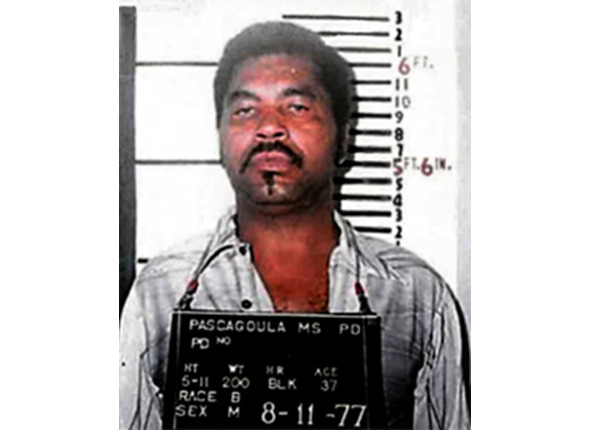
Source: fbi.gov
Samuel Little joined the U.S. Air Force after he was released from juvie in 1958. He served in the U.S. Air Force from 1958 to 1964 as a communications and airborne intelligence specialist. After a short time, however, he was discharged due to drug problems.
After serving his sentence, Little moves to California.
Perhaps because of the lack of attention and love from his family or peers, the young Little began to exhibit aggressive traits in his attitudes toward people and women in particular.
Relationships with women, even in Little’s younger years, were very complicated and ambiguous. This can be seen in his relationship with his longtime girlfriend Aurelia “Jean.
It is known that Aurelia “Jean” Dorsey and Samuel Little were acquainted and had a long friendship. He said in one interview that they dated and she was his “main girl” for many years. In 1982, Little attacked Jean Dorsey, raped her and tried to strangle her, but she was able to escape and call the police. Her testimony helped in Little’s conviction.
She was one of the few women who survived Little’s attack on them.
Her testimony helped imprison Samuel Little for several years. After his release, however, Little continued to commit murders. In 2018, Jean Dorsey appeared at trial and testified against Little, which helped convict him of two murders in Ohio.
Unfavorable family and environment, lack of parental attention and love, poverty, early childhood aggression and psychological instability, as well as the constant violence that Little had to endure, both from his family and people around him at the time, slowly formed the young Little into a serial killer
As already stated, Samuel Little was first convicted in 1961 of robbing and burglarizing a store in Florence, Arizona. He was sentenced to three years in prison, but was released on parole ten months later.
It was in this prison that he became a victim of violence at the hands of other inmates who severely beat and raped him. It was a brutal assault on him and it left a deep mark on Samuel Little’s life. He also reported that after this incident he began to use drugs and alcohol frequently in order to forget what had happened.
Perhaps this attitude in prison toward young Little was because of his small stature and, at the time, frail physique, and his inability to defend himself. He was chosen as a victim because he was new to the prison environment and had no support or connections.
This unfortunate event further affected his psyche and increased his aggressiveness.
Little recounted that he had been beaten, humiliated, and bullied in prison. This experience was traumatic for him and probably contributed to his aggressive and violent behavior.
According to some experts, the episode may have had a significant impact on how Little began to treat women in the future. Some argue that after this incident he began to hate women and began committing crimes against them.
The rape incident caused Little to be sent to another prison.
In the following years he continued to commit crimes, including the murder of women. Thus, it can be said that this episode had a significant impact on Samuel Little’s life and work.
He was 16. When Little returned from his first term, he did not continue his studies and left home. Since then he wandered around the states, never staying long.
In his youth, Little’s relationships with women were mostly short-lived, and at some points in his life he had a taste for prostitutes and met women in bars and on the streets. It is also worth
note that Little’s relationships with women were often violent, which is a characteristic of serial killers.
Thus, it can be concluded that Samuel Little lacked a healthy and stable relationship with women. In his youth, he did not have, as many of his peers did, any girlfriend or steady girlfriend, which may have influenced his psychological state and behavior in the future.
All in all, it can be said that Little’s dysfunctional childhood and troubled virginity had a strong influence on shaping his psychology and behavior. This may explain why he became a serial killer, and why his victims were women who were also on the public periphery and had no support.
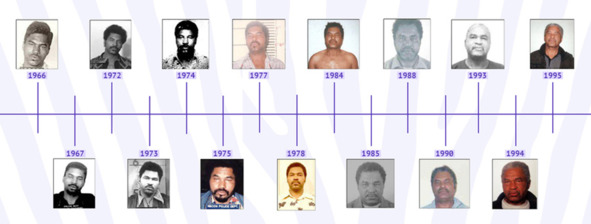
Incomplete chronology of Samuel Little’s arrests. Source: fbi.gov
Beginning in 1961, Little begins a l=dozen years long journey and which will only end in 2014, when he will be apprehended in the state of California and 2014 finally received a life sentence.
Samuel Little was convicted and served time in prison several times, but he also managed to escape punishment as a result of parole, amnesties, and other circumstances. His total length of incarceration during his lifetime exceeds 30 years.
Chapter 2 THE FORMATION OF SAMUEL LITTLE’S PERSONALITY IN A SERIOUS KILLER
Samuel Little had no formal education and was not trained in any profession. In his youth he had various part-time jobs, including working in restaurants and bars, but in general his life was connected with the criminal world.
Little liked to spend money on alcohol, drugs, gambling, and women. He often met women in bars and on the streets and spent large sums of money on them. He was also known to be prone to theft and robbery in order to make quick money and spend it on his pleasures. In general, Little led a very irresponsible and carefree lifestyle, which may also have influenced his psychological state and behavior.
As mentioned earlier, Little has had problems with women since childhood. His dysfunctional virginity and lack of healthy relationships with women as a teenager may have been one of the key factors that motivated him to commit female homicide. It is possible that Little
had feelings of revenge against women who rejected him or didn’t care enough.
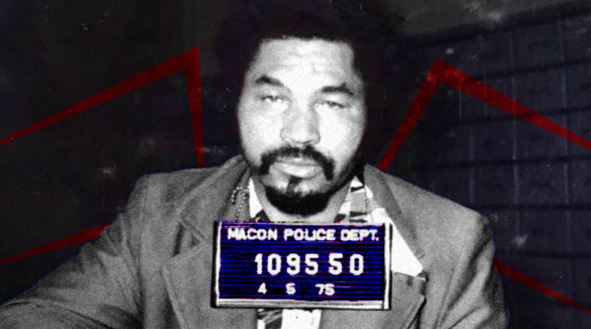
Collage: “Base”
He also blamed women for his failures in life and often blamed them for his problems. These behavioral patterns likely began to form at an early age and may have been exacerbated by traumatic events in his life, such as rape in prison.
The lack of family and intimate relationships, as well as the fact that Little was deprived of his mother’s care and attention as a child, may have caused him to feel lonely and helpless. The lack of close relationships and family support may have been one of the reasons for his desire to control and kill other people.
Little was surrounded by violence and a criminal lifestyle from an early age. He witnessed violence at the hands of his father and, growing up, among his surroundings, criminals and drug addicts.
Another reason that largely shaped Little into a serial killer was his chronic alcoholism and drug addiction: All together this affected his psychological state and increased his propensity for aggression and violence.
All of this combined, formed his position in life, in which he saw violence against another person as the norm. Hence the lust for power and control over people, and Killing as a method of realizing and satisfying these needs. And women as the most defenseless and most accessible option of prey.
There has been speculation that Samuel Little may have had a sexual disorder. However, there has been no official diagnosis or confirmation of this information. In interviews Little did not admit to having any sexual disorders or abnormalities. Instead, he said that his crimes were the result of an insatiable lust for killing and controlling his victims.
Samuel Little spoke about his psychology and motivations during interviews with journalists and law enforcement officials. He described himself as sexually aroused by killing women and referred to himself as “just a hunter.
Little said that he viewed his victims as objects, not people, and that killing was a way for him to satisfy his sexual fantasies. He also said he felt no guilt for his crimes and believed they were not his fault.
The physical characteristics of Samuel Little’s victims varied according to age, gender, and race.
However, there are some common traits that can be identified in many of the victims:
– Most of the victims were women or girls.
– Many victims were careless or lived on the streets.
– Some victims had drug or alcohol problems.
– Many victims had been raped before or after the murder.
– And many of the low ones were kidnapped and/or murdered in California cities.
Only twice did Little stray from his pattern. Once he killed a transvestite guy who introduced himself by a woman’s name and wore a woman’s dress. The deception was uncovered during the communication, but Little would not give up the crime. The second “breakdown” occurred when Samuel drowned the woman rather than strangling her.
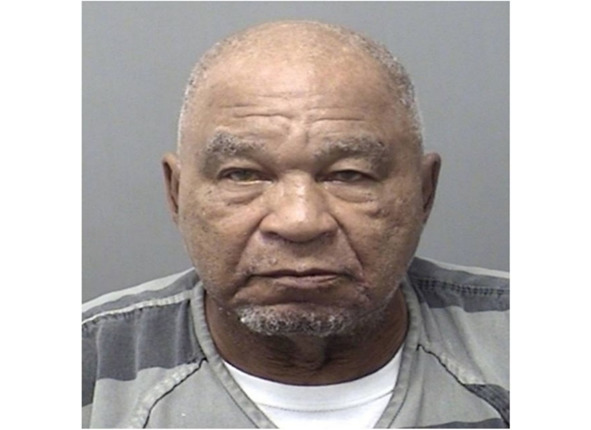
Samuel Little in prison. FBI photo
Thus, we can briefly summarize the main reasons that shaped Samuel Little into one of the most famous serial killers in America and the world, who murdered over a hundred women across the United States.
Samuel Little’s reasons for killing are multiple and complex, and not always easy to understand. However, some known factors may have influenced his actions:
First, Little had a difficult childhood of domestic violence, poverty and instability. This may have caused him to develop various mental problems and feelings of alienation, which could later develop into a desire to kill.
Second, Samuel Little displayed sadistic tendencies and an interest in violence at a young age. He masturbated by looking at violent pornographic images. This may have led Little to seek out stronger and more extreme forms of violence, which could again lead to murder.
Third, Samuel Little was an alcoholic and a drug user, which may have impaired his mental state and affected his ability to make rational decisions.
Finally, Little may have been sexually motivated, since most of his victims were women or girls. Little himself did not admit to having any sexual impairments or deviations. Instead, he said that his crimes were the result of an insatiable lust to kill and control his victims.
Samuel Little was arrested more than 100 times for various crimes, including robbery, robbery, rape, and assault on women, but he escaped punishment or received relatively light sentences. He was also investigated for murder at various times, but the charges were not supported by insufficient evidence

“White female, 20—25 years old, murdered in 1972. Likely Massachusetts victim.” Photo: FBI
The first time, in 1976, a young woman told police that Little had tried to strangle her and had brutally beaten and raped her in his car before doing so. Samuel, 36, was arrested, and the complainant’s clothes and jewelry were found in his car.
True, Little spent only three months in prison because his victim appeared to the court to be an unreliable witness, a girl who had engaged in
prostitution and drug use.
Similar cases have been repeated with Little many times. And each time the jury or the court acquitted Little for the same reason: the unreliability of the victims. In 1984, in Florida, he was acquitted of the murder of Patricia Ann Mount, a young mentally retarded woman, even though Little’s hair was found on her body.
In the 1980s Little began committing serial murders of women who were often homeless, prostitutes or drug addicts. He sought out his victims in various U.S. cities, moving from place to place, and killed them by strangulation or blows to the head.
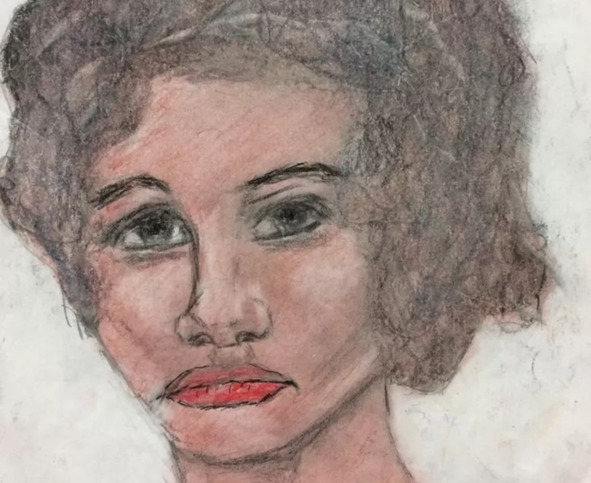
Black female, 26 years old, murdered between 1976 and 1979. Met the victim in the city of St. Louis, Missouri. Apparently the victim’s name was Joe.” Photo: FBI
In 1982 Little was arrested in Pascagoula, Mississippi, and charged with the murder of 22-year-old Melinda Rose LaPree, who disappeared in September of that year. A grand jury refused to indict him on the murder charge, and he remained free.
During the investigation, however, Little was extradited to Florida and stood trial for the murder of Patricia Ann Mount, 26, whose body was found in September 1982. Prosecution witnesses identified Little in court as someone who had spent time with Mount the night before she disappeared. According to the investigation, Little met Mount at a bar where she worked and suggested she go for a walk with him.
They went to the beach, where Little attacked Mount, raped her, and then killed her. According to the official version, Little strangled Mount to death and threw her body into the sea.
Due to distrust of the testimony of witnesses, Little was
acquitted in January 1984
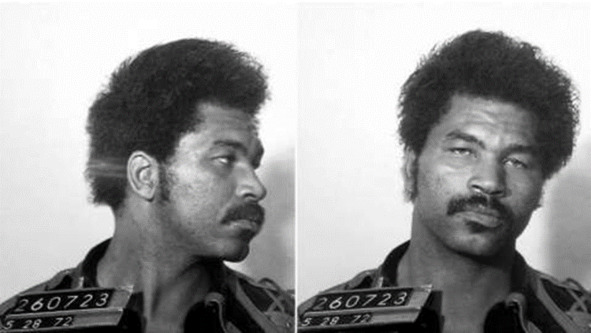
Samuel Little after another detention in 1972 Photo: FBI
CHAPTER 3. MOVING TO CALIFORNIA AND THE NEW MURDERS
Little moved to California, where he settled near San Diego. In October 1984 he was arrested for kidnapping, beating and strangling 22-year-old Lori Barros, who survived. A month later, he was found by police in the back seat of his car with an unconscious woman, also beaten and strangled, in the same spot where Barros had been attempted murdered.
Little served two and a half years in prison for both crimes. After his release in February 1987, he immediately moved to Los Angeles and committed at least ten more murders
Samuel Little murdered 15-year-old Laurie Ann Stallings of San Pablo, California, in 1987. He kidnapped, raped and murdered the girl. This was the beginning of a series of murders that continued until his arrest in 2012.
According to Little’s story, he saw the girl and decided to take her for a walk and then bring her home. However, once they were in the woods, Little forcibly knocked Lori down, raped her, and then strangled her. The girl’s body was found the next day.
But unfortunately, Samuel Little escaped punishment for the murder of Laurie Ann Stallings as a result of insufficient evidence, witnesses, and physical evidence. Even then, Little had a reputation as a drug addict and criminal, and his word was not trusted because he often lied and twisted the facts.
Little was saved by the fact that he lived with a woman who provided him with an alibi for when the crime was committed. As a result,
the case remained unsolved for more than 20 years until Little was caught and pleaded guilty to this and other murders.

Photo: FBI
In this case, as in the other case of Laurie Ann Stallings’ murder of another victim, and in some other cases, witnesses to the crime who saw, for example, Little raping and murdering the girl were afraid to report it because they feared for their lives and the lives of their loved ones.
In another case, a witness, for example, did not report his observations for fear of being arrested for drugs. The general silence and fear unleashed Samuel Little and he begins to kill more and more often.
Another high-profile murder involving Samuel Little occurred in 1985 in Gadsden, Alabama. The victim was 31-year-old Tiffany Harley.
Little confessed to the murder in 2018 and was charged in 2019. According to the investigation, Harley was one of Little’s first victims, whom he killed back in 1985, but the case remained unsolved for years.
Little kidnapped her and raped her before strangling her to death. Witnesses noted that they saw Little and Tiffany together, but refused to testify because they were afraid of him.
Tiffany Harley’s murder, like many of Samuel Little’s other crimes, was described in great detail by witnesses. Some witnesses, including Harley’s neighbors, reported hearing screams outside on the night of her murder. One witness reported seeing a man running from Harley’s house that same day.
However, none of the witnesses could accurately identify Samuel Little as Harley’s killer, and many of them refused to testify for years after the crime was committed. As a result, Little was not punished for this murder and continued his crimes for many years. As in other cases, Little managed to escape punishment for this murder until his arrest in 2012
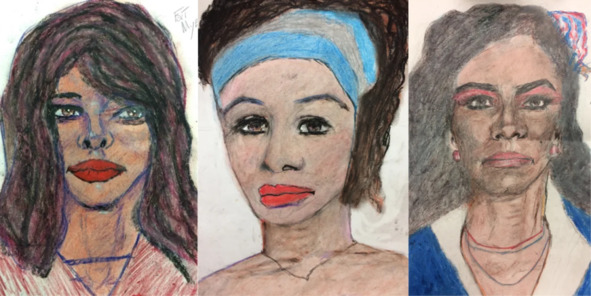
Portraits of Samuel Little’s victims he painted / Photo: fbi.gov
There are many instances in which witnesses did not testify incriminatingly and thereby helped Samuel Little escape punishment for his crimes.
Here is a prime example of such indifference. Samuel Little killed Rosemund Gehring in 1998 in San Francisco, California. “it was an elderly woman who lived next door to Little. However, a witness who saw Samuel Little on the day of the murder did not report it to police. Little escaped punishment for the murder until his arrest in 2012.
According to the evidence, Goring was the heiress to a fortune and had a rather large sum of money in her bank account. Little learned of this and decided to rob her, but when he tried to do so, she began to scream and he strangled her to shut her up.
A witness, who lived in the same building as Goering, stated that he had heard shouting that night, but had not paid attention to it, because he thought it was an ordinary conflict between neighbors. However, after the murder the witness gave the police a description of the man he had seen that evening in the stairwell of the building. This description helped police get on Little’s trail and find his DNA at the crime scene.
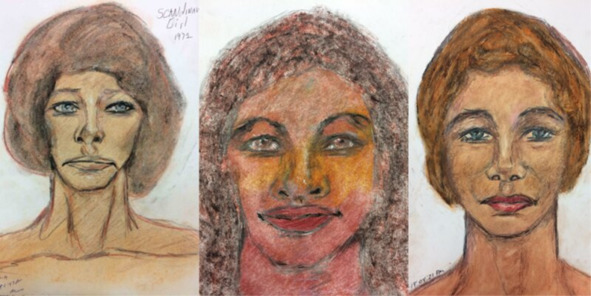
Portraits of Samuel Little’s victims he painted / Photo: fbi.gov
In 1993 Little kidnapped and raped a 13-year-old girl in Oakland, California. She managed to get away from him and report the incident to the police, but at the time there was not enough evidence to charge Little. One witness saw Little take the girl away, but did not report it to the police. Little was able to get away with this crime until his arrest in 2012
In 1998, Samuel Little killed 15-year-old Angelica Jenoff in Daly City, California. A witness who saw Little take her away did not report it to police. Little escaped punishment for the murder until his arrest in 2012.
One witness who saw Little take Nicole did not report it to police. Little escaped punishment for that murder before his arrest. only in 2012 for another crime, and confessed to killing Angelica Jenoff during an interrogation in 2018.
Judging by his confession to the murders, Little had no compassion or any other positive feelings toward his victims. He chose his victims based on vulnerability and ease of access, and showed no concern or consideration for them after the murders were committed. Little described his crimes as a way to gain pleasure and control over others

Portraits of Samuel Little’s victims he painted / Photo: fbi. go
Samuel Little chose his victims based on vulnerability and ease of access. Most of his victims were women, often living in public accommodations and street workers. They were often poor, lonely and helpless, without strong social ties or family support.
Little’s victims ranged in age from 15 to 65, but most were middle-aged (about 40 years old). The figure and clothing of the victims did not matter much to Little, since he killed women from a variety of social backgrounds and social groups. However, he often chose victims who could be easily identified as prostitutes or women with alternative lifestyles.





